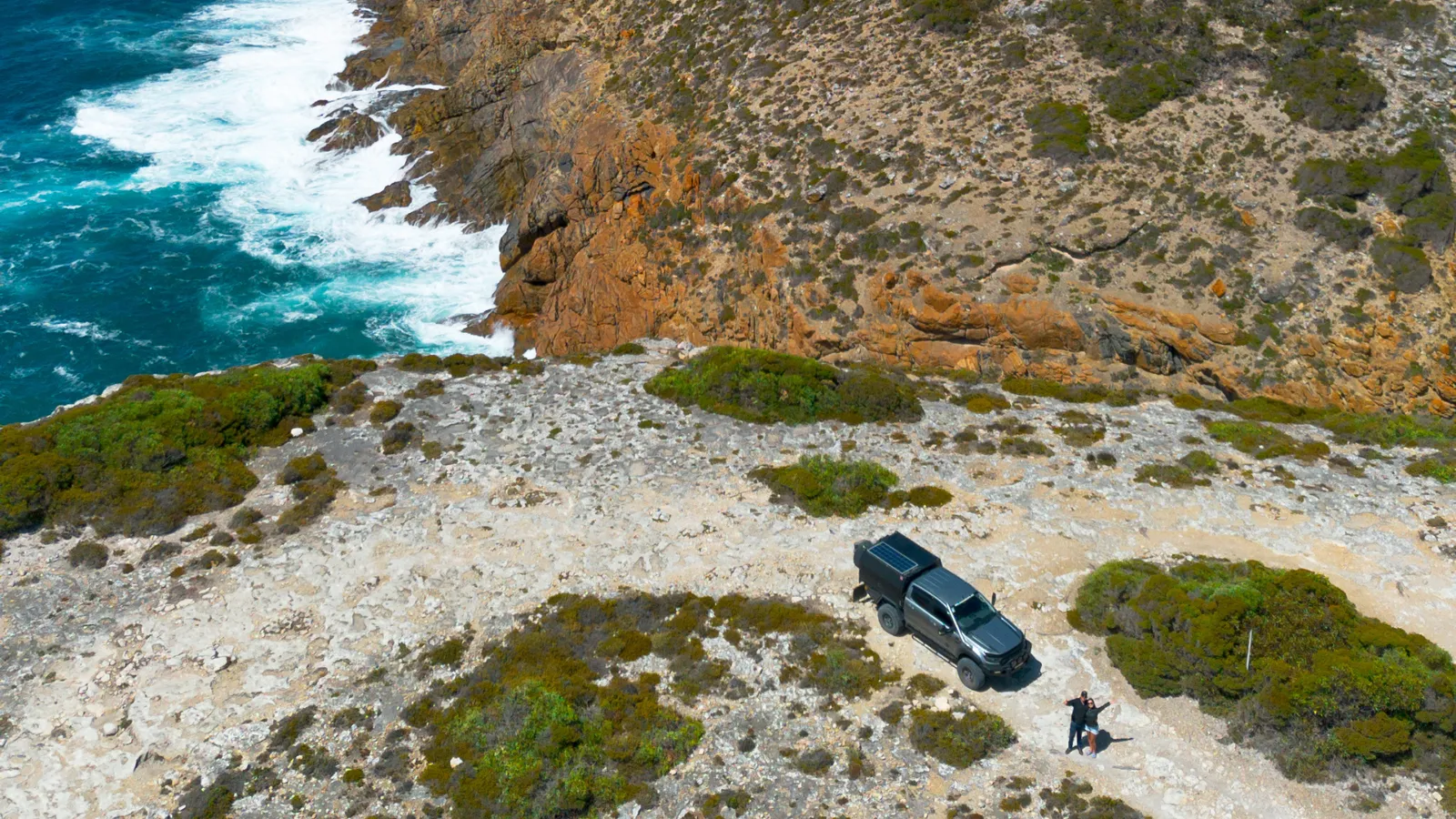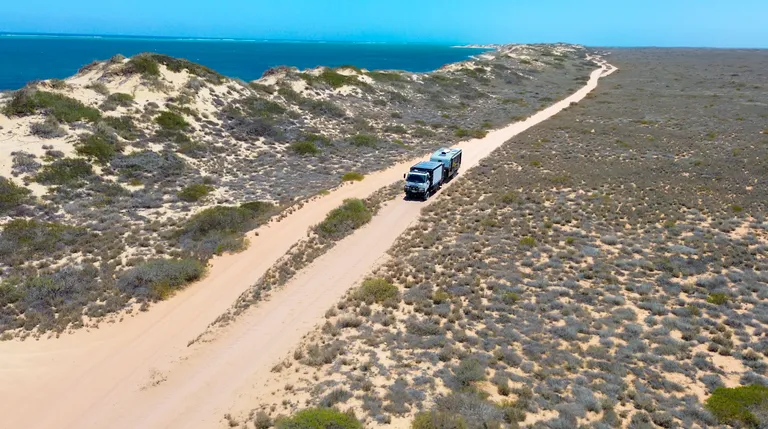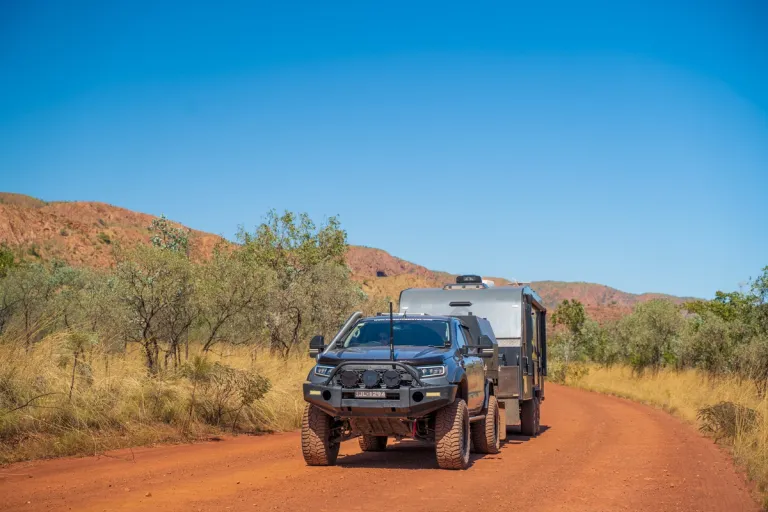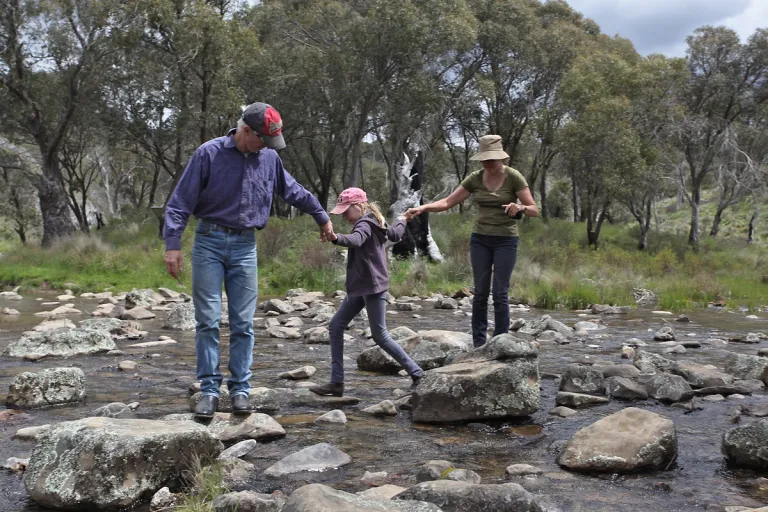Whether you’ve packed your life into a few boxes to hit the road full-time in your 4WD, or you’re a weekend warrior who spends every spare moment searching for their next technical track: one thing we all need to have in common is the ability to navigate different terrains. Whilst 4X4ing opens up a world of adventure, it also demands a unique driving skill. Not only do you need to be able to sail over corrugations, deal with soft sand and climb over rocky landscapes but things like fuel consumption, mechanical sympathy and staying safe all need to simultaneously come into the mix!
It’s a lot to think about all at once and for a beginner it can feel overwhelming. But don’t let this challenge become a roadblock; this guide will help you navigate and master the terrains that try to break even the bravest of adventure junkies.
Know your terrains and how to drive them
You know, like “know thy enemy” except the terrains take more of an ‘enemy to lovers’ trope in this instance. You don’t need to be a jack of all trades on day one, but having a rough idea and the basics of each terrain will limit the shock factor on your off-road adventure.
1. Sand
Perhaps one of the most feared when it comes to apprehensive 4WDers is the sandy terrain you’ll find on beaches or desert tracks. If you were playing “word association” where you hear a word and respond with your first thought or feeling, many people would hear “sand” and immediately say “bogged”. And if there’s one thing that makes a terrain more intimidating it’s throwing in the fact that you may need to recover yourself, another learned skill set for the road that feels challenging as a newbie or a solo traveller.
What you need to know:
- Lower your tyre pressures to around 15 psi before you roll onto the sand.
- Keep your momentum up but don’t overdo it and race through - you’ll want an even acceleration and braking strategy on soft sand.
- As above, avoid any sudden movements or sharp turns - anything that’s going to dig you into the soft terrain below your tyres is not your friend.
- Carry traction boards to allow yourself the best chance of self-discovery should you find yourself stuck.
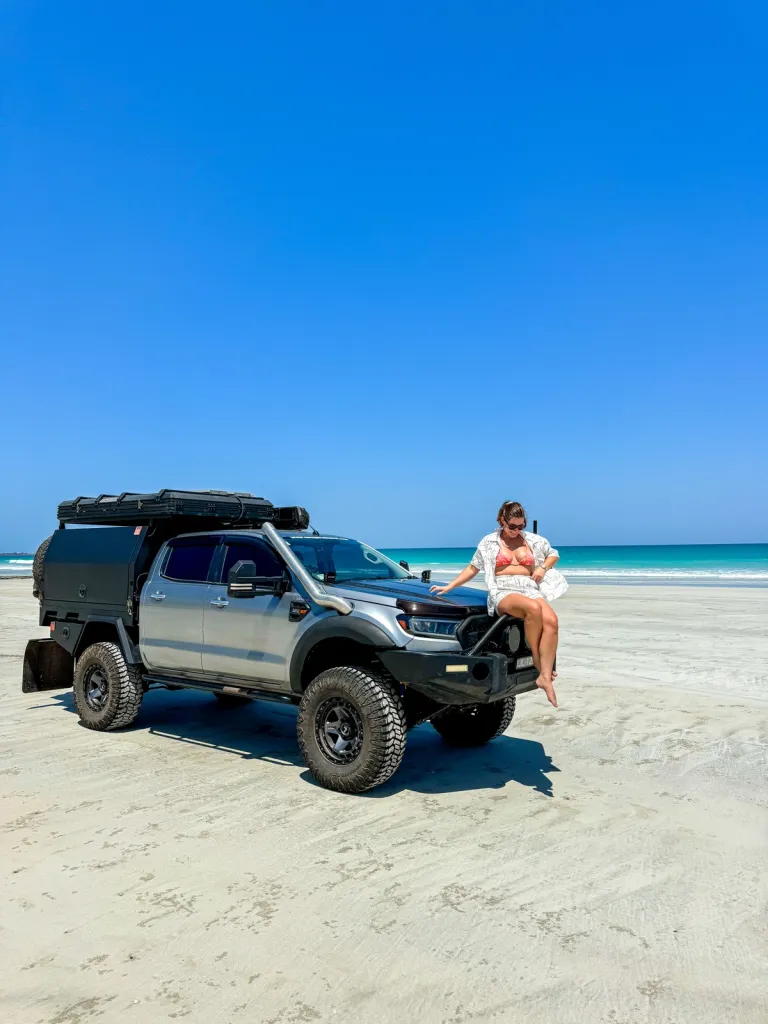
sand driving guide
2. Water crossing
If you surveyed a bunch of 4WDing newbies, I think you’d get a resounding vote that water crossings are terrifying. We’ve dedicated a whole article to it previously, so if you’re wanting to go deep on water crossings (pun intended) then check out this yarn (link the water crossing yarn).
The basics of what you need to know:
- Look at the water flow, if it’s flowing fast then forget about it
- If it’s safe to do, walk the crossing first and take note of the surface underneath your feet and any obstacles like holes or submerged objects
- Drive steadily, keeping a constant momentum and as with sand and avoid sudden braking.
3. Corrugations / Gravel / Dirt
Although different, these three terrains share some characteristics and therefore require similar action plans. This terrain certainly finds itself on the more favourable side as typically they’re less challenging than a sandy track or a water crossing.
A snapshot:
- Reduce your tyre pressures to create a smoother ride - you’ll need to assess the terrain yourself but a typical pressure would be around 25 psi.
- Get your speed up to a nice momentum and then maintain a consistent speed - again you’ll need to work this out for yourself on a case by case basis however around 60-80 km/h is typical.
- Watch for washouts, dips and hazards on the road and allow yourself the best chance to react with plenty of time.
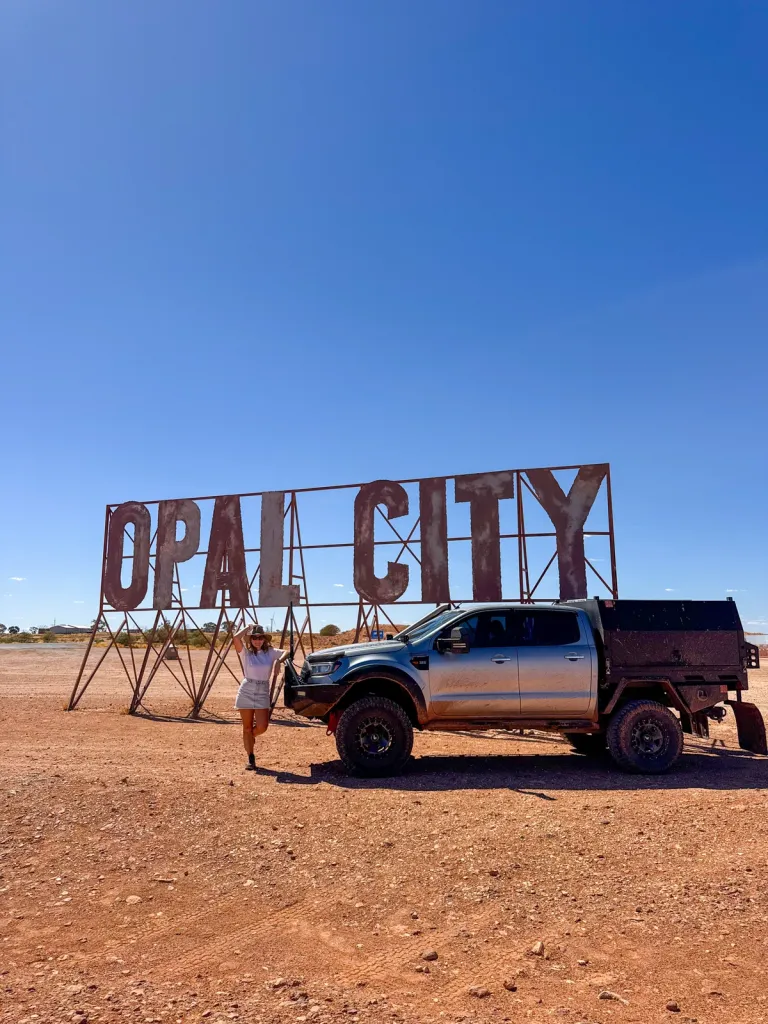
gravel and dirt 4wd terrain driving guide
4. Mud
Driving on muddy terrain can be a whole heap of fun that future you needs to deal with when your pride and joy has been well and truly painted brown! Although it’s a thrilling adventure, it’s a terrain that still requires a certain level of skill and preparedness.
Some tips for a muddy terrain:
- Keep your momentum up, just like sand if you stop suddenly in the mud you could find yourself stuck. It’s a much more tedious recovery when you’re ankle deep in the wet stuff!
- Use a slow and steady throttle and if you feel the vehicle slipping, avoid spinning the wheels and digging yourself in.
- Invest in good tyres before you go: aggressive tread patterns found on mud terrain tyres can assist you in handling the slippery stuff. Although a lot of 4X4ing comes down to skill, even the best wheeler can’t perform with the wrong gear.
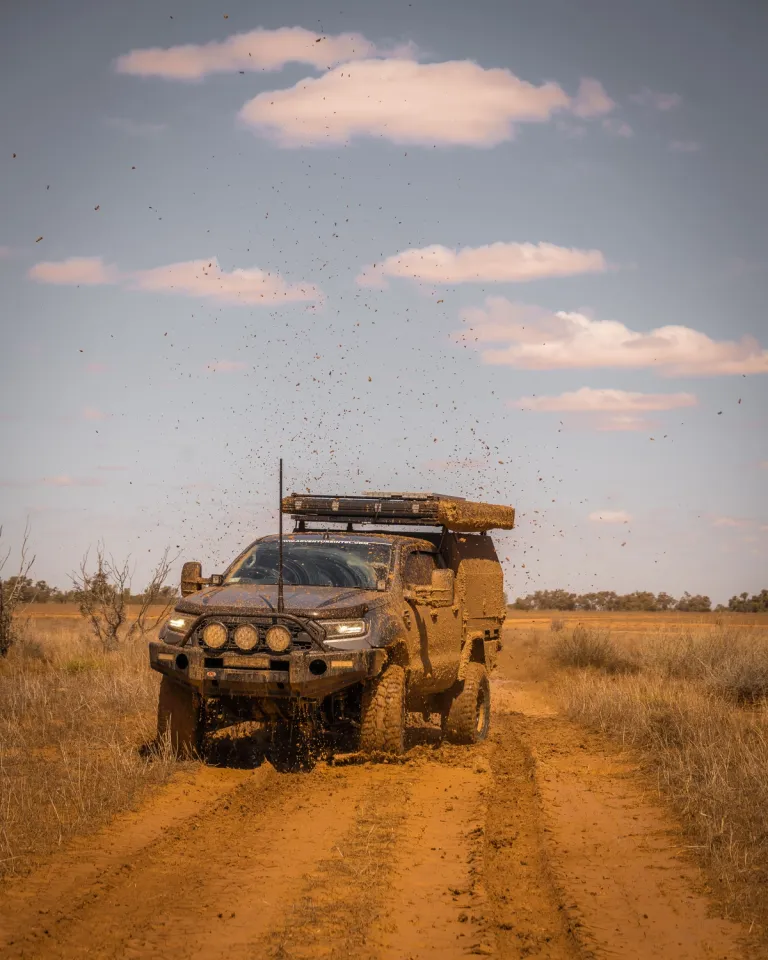
muddy terrain mud off road driving 4wd guide
5. Rocky terrain
Rock crawling: you either love it or hate it, but one thing that’s for sure is it requires a bunch of patience. Not only do you need to be constantly watching your lines but you need to continually assess the track, usually by stopping and jumping out to take a look when necessary.
What you need to know:
- Air your tyres down to around 18-24 psi depending on how sharp the rocks are and how much your tyres bag out.
- Consider adding underbody protection such as a bash plate, especially if you’re planning on regularly travelling the bumpy stuff.
- Use low range and go slow - There are two advantages here: you’re going to have more control and you’ll be actively preventing damage to your vehicle’s underbody and suspension.
- Pick your line. Although this is something that applies to all terrains, it’s especially important when navigating a rocky surface as avoiding sharp surprises is imperative if you want your tyres to remain unpunctured.
- Use a spotter (if possible). If you’re in a convoy, get someone on the ground to watch and guide you through tricky situations.
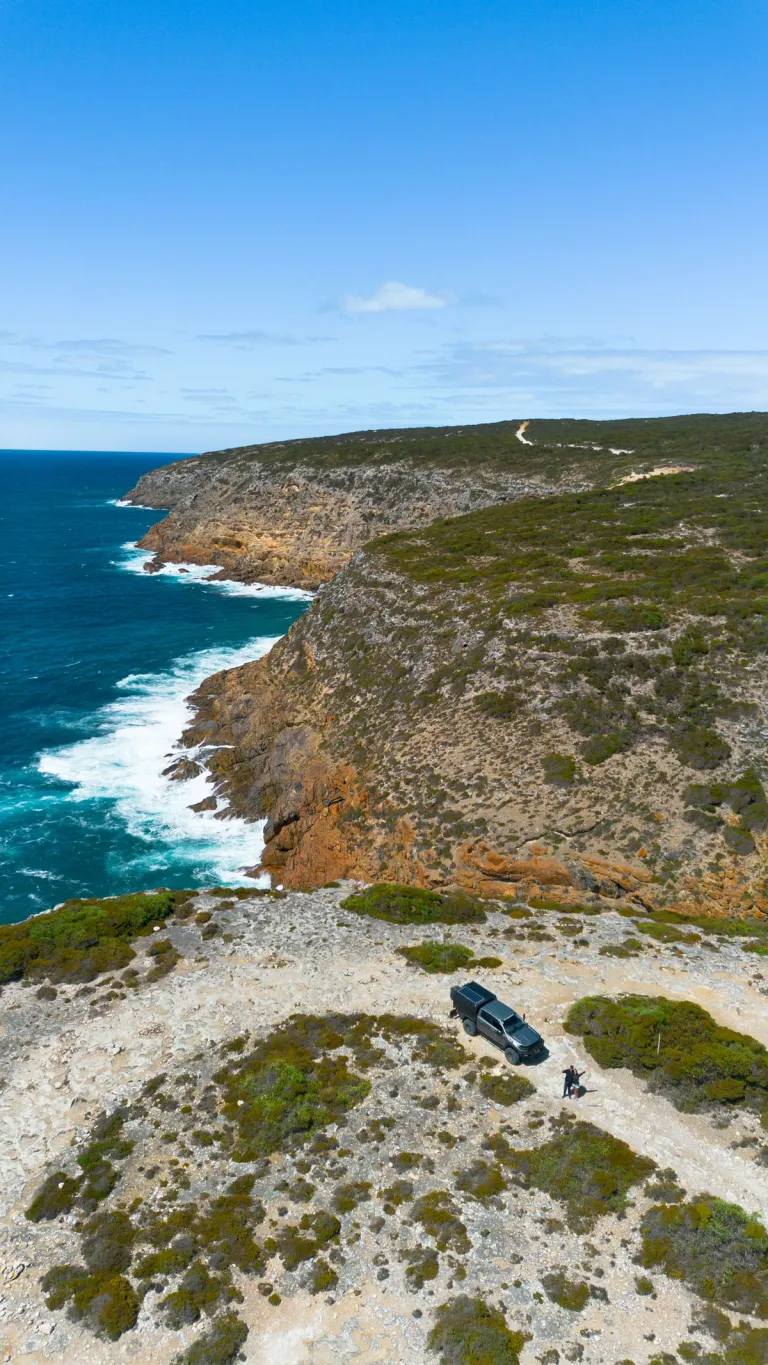
rocky terrain rock crawling 4wd off road
Other things to take into consideration
Driving different terrains is only part of the picture, you need to take into consideration not only how you drive them but how to be off-road as a whole. This is relevant to both weekend adventurers and full-time travellers alike.
Here's what beginners need to keep in mind when living full-time on the tracks:
Do regular vehicle checks
- Start each day with a ‘walk-around’ where you look for leaks, check your tyre pressures, and make sure everything is secure. We call them ‘daily’s’ and while living on the road full-time, they’re absolutely an integral part of our daily lives.
- When driving, listen for unusual noises or changes in handling - yes, this means turning off the radio when off-road to listen to your rig. It’s very important to pick up on these sounds early as small clues can pinpoint a bigger issue long before it becomes a problem. The tunes can wait!
Think about weight
- Every kilogram counts off-road because the heavier your setup, the harder your vehicle works. And when your vehicle is working well beyond its limit it’s likely to get damaged. Increased weight also means you’re far more likely to get bogged, which we also want to avoid as much as possible.
- When packing, ensure you store your heavy gear low as well as evenly distributed rather than stacking everything on your roof. Doing the latter can raise your centre of gravity and affect stability, creating a whole new safety issue in itself.
Constantly consider fuel, water and power
- Always carry more water than you think you’ll need and be as stingy as possible when cooking and cleaning with it. Should you find yourself in an emergency situation or stuck, potable drinking water is a lifeline.
- Top up your fuel whenever you can, especially when travelling through remote country. Although you may find eye-watering prices around the $4 mark per litre in some places, it’s far more expensive to get yourself towed out of the middle of nowhere.
- Know how your battery and solar setup work and charge so you’re not caught out without power. An off-grid camping experience is all fun and games until you’re forced to sit powerless, in the dark with no power to cook meals, eating plain white bread for dinner.
Have a communication line
- Just as with the power, being off-grid is fun when it’s a choice. However finding yourself in an emergency situation where you cannot call for help can be the difference between life and death. Carry with you an EPIRB and/or Starlink internet so you have the ability to wave a white flag and call for assistance.
- A UHF radio is another communication device I’d implore you to install in your rig, not just so you can ask truckies when it’s safe to overtake but so you can listen for road condition updates or call for assistance if needed. We had a medical emergency within the first 3 months of our lap and used our UHF to find out where the closest hospital was as we were not in range to search online and time was of the essence to seek help. The added bonus here was that the locals who guided us to help also knew I was driving Josh to the hospital and kept checking via UHF that we were close/had made it, which made me feel far less alone in a terrifying situation.
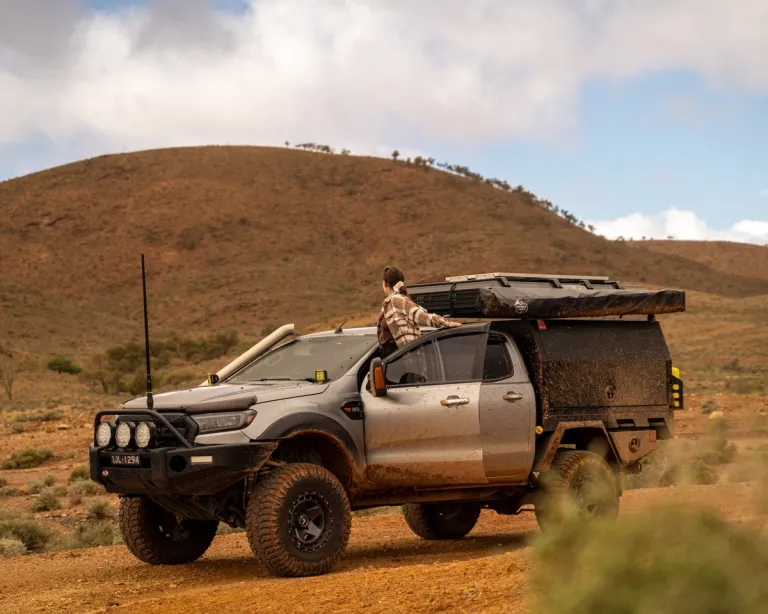
One lesson that has stuck with me through time is to always approach things like you’re a student, so the ego never gets too big to take on new ideas or perspectives. I hope that even if you’re an experienced 4WDer who’s seen as much bulldust as an Outback ringer, that this article refreshed your memory or even taught you a thing or two.
Remember you’re never too experienced to learn a new skill.
Like taking the road less travelled?
Make sure your insurance can go there too.


